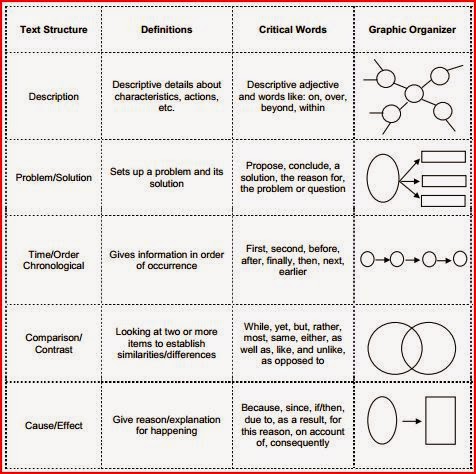I needed to move their thinking deeper than this. The resource I've been using, Writing About Reading: From Reader's Notebooks to Companion Books, moves students right to noticing the details vs. big ideas they find in their entries, but my students' entries just summarized their books. It seemed they weren't noticing any big ideas, and I needed to reshape the kinds of thinking they were doing. I decided to take a detour lesson, and have students reflect on the kinds of thinking in their entries.
I started by sharing the three kinds of writing (not genres, but kinds of writing), and had students discuss with their partners what kind of writing they were doing in their reading notebooks.
Narrative
Argumentative
Informational
Our first unit this year had been narrative, so they were quickly able to choose informational and share reasons why. Each student then taped the following chart into the back of their reading notebooks (this is where we take notes).
 |
| Types of Text Structures in Informational Texts |
Then, I had students turn to their own notebooks. What kinds of thinking were they doing most? Students had to label each entry (at this point they had 5) with the kind of thinking presented there. As I moved through the group and listened to conversations, I noticed exactly what I was hoping for: students were labeling their entries as "description" over and over again.
When we returned to full group, we shared this. We brainstormed ideas about how to think differently in our entries, added the ideas to our chart, and then set off to write entries in which the thinking was different.
Entry #6: Deliberately write an entry in which you think differently than your other entries.
No comments:
Post a Comment